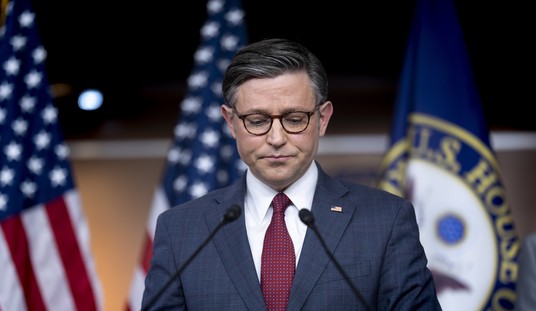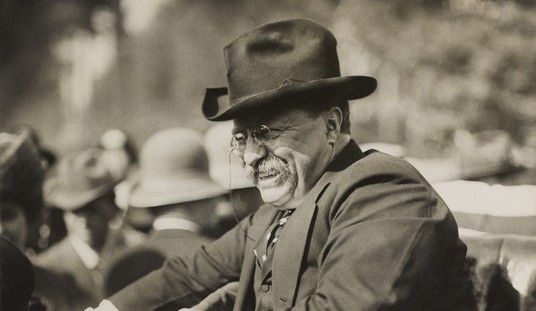Act of Valor
4 stars (out of 5)
Directed by Mike McCoy and Scott Waugh
111 minutes
THERE IS NO question that Act of Valor is a unique film, for many reasons. The most prominent among these is inarguably the combination of active duty Navy SEALs in starring roles, and the extent to which the film’s advertising and promotion have focused on that role – factors that made it a controversial film well before today’s release date arrived. Was this simply a piece of slickly-produced military propaganda? Who paid for the film, and how much influence did the Navy have over its contents and artistry? And was it safe to feature active duty Navy SEALs carrying out specialized operations on the big screen, where anybody could see both their identities and their tactics, techniques, and procedures (TTPs)?
I had the opportunity to screen this film and to speak with its directors, Mike McCoy and Scott Waugh, before its release, and our conversation touched on each of these topics, as well as Hollywood’s historic portrayal of the military in general, and special operators in particular. McCoy and Waugh knew very little about Navy SEALs and other military professionals prior to beginning this project, which was originally set to be a brief recruiting video. Once the project was under way, though, they realized that the John Rambo/Dale Hawkins image of special operators they were familiar with from previous films was so far from the truth as to be unrecognizable. They were surprised by the humility and the team-centered attitudes they encountered from team members, as well as the role that family played in each’s life. The morphing of the recruiting video project into Act of Valor, and the decision to feature real SEALs and their families in starring roles, is a story that has been told and retold in the run-up to the film’s February 24 release, but it is one which is both important and interesting nonetheless.
The biggest issue taken by serious critics of Act of Valor has been the possibility that it represents military spin or propaganda, as a result of both significant military involvement and the use of active duty operators in the telling of a fictional story. In the opinion of McCoy and Waugh, the propaganda value of the film is minimal for two chief reasons: the fact that the plot doesn’t incorporate a real-world foreign conflict, and the fact that, rather than simply being a slick Hollywood glamorization of Navy SEAL life, the risk and sacrifice borne by all of these military personnel is placed front and center within the story. While this answer won’t satisfy all critics, it is clearly the response that the film’s directors believe such a question deserves.
THOUGH ACTIVE DUTY military personnel and a significant amount of military equipment were used in Act of Valor, McCoy and Waugh maintain that they had complete creative control over the film, with the DoD simply having final input on the TTPs which could endanger operational security (OpSec) if shown on the big screen. Likewise, the SEALs shown in the film – every one of whom reportedly said “no” when first offered their roles – are pseudonymous, and do not appear in the credits, which instead list the Navy Special Warfare (NSW) professionals who have lost their lives in the line of duty since 9/11 (further, as “white” special operators – they are identified as being members of SEAL Team 7 – the SEALs identities and unit affiliation are not protected information).
The Department of Defense did not provide any funding for Act of Valor, but it did provide a remarkable level of access. The film crew embedded with the Navy Special Warfare (NSW) unit on training exercises over the course of two-plus years, filming the action and integrating it into the film. Interestingly, one of the biggest complaints by those professional reviewers who are actually attempting to review the film (rather than using their platform as film critics to review U.S. foreign policy as they see it) is that the combat scenes, tactics, and weapons don’t seem realistic. Leaving aside some obvious stretches – such as when one operator catches the body of a sentry after a seven-foot fall without budging an inch (0:42-0:52 here) – and some TTP scrubbing for necessary OpSec reasons, the missions and operations featured in Act of Valor were as authentic as Hollywood has ever made them. NSW operators planned and executed each phase of the operations. Some exercises were augmented (for example, a high-priced yacht was used in place of a standard target boat for an open-sea takedown), but all operational situations were planned and executed by the Navy professionals starring in the film. Additionally, the fact that several scenes were filmed during live fire training exercises was a further plus for realism. Filmmakers can do virtually anything when blanks are being used, but when live ammunition is in play, every move made by those involved is critical, and additional realism is unavoidable.
While there are plenty of legitimate criticisms that can be leveled at any film, Act of Valor included, claims by professional movie-watchers that the action and the TTPs in this film are less “realistic” than other war and military productions coming out of Hollywood ring exceptionally hollow, particularly given the nearly-identical CGI mashups modern action movies have largely become. That brings up an other unique aspect of this film: unlike virtually every other action film made in the last decade-plus, Act of Valor boasts precisely zero CGI shots or effects. Instead, all of the action takes place “in camera” (and, perhaps unsurprisingly in a film directed by former stuntmen, the SEALs perform their own stunts, as well). In an age where CGI-based movie and video game action, violence, and death appears more ‘realistic’ than reality itself, it is unsurprising that those who have experience only with the former would criticize the latter as unrealistic or unbelievable. However, that does not make their critiques correct by any measure.
IN ADDITION TO the TTPs used in carrying out a personnel rescue or a raid on an enemy camp, an example of comprehensive realism in Act of Valor, and a component that is almost never seen on film, is the portrayal of the precise coordination between an amazing number of moving parts that go into pulling off a successful mission. In one case, a mission begins with a HALO jump from a C-130 and overland movement to the objective; continues with the delivery of NSW Combatant Craft (which are slingloaded under MH-47s) into a riverine environment and the “hot extraction” of the SEALS by the combatant craft crews; and concludes with a recovery by the MH-47s, which fly the boats and personnel back out of the area of operations. While many films have shown direct action raids (some more realistic than others), the necessary choreography of such an operation – with every piece in exactly the right place at exactly the right time – is rarely seen in film portrayals, and provides far better operational context than almost any film has shown to date. Additionally, this segment provides some rare screen time for the Navy’s Special Warfare Combatant Craft Crewmembers, who get a chance to ‘roll’ into a hot extraction zone with guns blazing (and who look very cool while doing it). The pieces are different but the coordination is similar in another segment. When two team members deploy to Somalia to perform a strategic reconnaissance mission, they are dropped from a C-130 along with a zodiac They rendezvous with a nuclear submarine, which deposits the SEALs and their delivery vehicle just off the coast.
As a movie, Act of Valor is solid, if not outstanding, and is likely destined to become as much a favorite among military members, supporters, and veterans (if not among the remainder of the population) as films like Black Hawk Down. The focus is narrow – the SEALs take up as much as 90% of the total screen time – and the plot is fairly simple. A CIA agent is taken captive by a billionaire drug and weapons smuggler who is assisting a childhood friend, a Chechen Muslim, in a plot to strike America with a squad of suicide bombers. Upon rescuing the CIA agent, the greater plot is uncovered, and members of the featured SEAL platoon are dispatched to different parts of the globe to collect intelligence on and to prevent the terrorist plot.
It is impossible to watch the film without knowing that the stars are not professional actors (McCoy and Waugh appear in a clip before the opening credits and explain their decision to cast real SEALs in their roles). As a result, the somewhat wooden acting and dialogue aren’t too distracting or disappointing. For non-actors, they do very well (better than some professional actors, in fact). Though it’s easy to tell when a professional actor, such as the charismatic smuggler, is on the screen, some of the best give-and-take dialogue comes when the SEAL Team’s “senior chief,” an active duty intelligence professional, interrogates the smuggler (played by Alex Veadov) on his yacht (if only real-world interrogations were as smooth and productive as the one presented here!). “[Senior Chief] had just gotten back from Afghanistan,” Veadov told the New York Times. “At first it was OK. As it progressed a little, and he starts throwing things around, it kind of became a little tense. When he started speaking Croatian, though, it became freaky. I don’t speak Croatian, but he must have looked me up on the Internet. I had done a play with a Croatian company. So he did research on me as an actor. And I was little bit intimidated. After all, this is what this guy does for a living.”
The narrow scope of the film means that non-germane, macro-level issues of American foreign policy and war aren’t dealt with (much to the chagrin of some reviewers, who have roundly criticized that omission in an already-lengthy movie). Instead of dealing with outside issues at length, the film is very character- and operation-centric. Details and larger issues that don’t affect the individuals on the Team or the events within the plot aren’t raised at all – a fact which is, in this reviewer’s view, a net positive for the film and for those issues, as they would necessarily have been given short shrift if introduced into the film simply for the sake of mentioning them. What is given much-deserved attention is the level of risk encountered by these professionals each time they set foot “outside the wire,” as well as the incalculable weight carried by those family members and loved ones who are left behind, either to await an eventual return or to mourn the fact that no return will be forthcoming. The latter is portrayed in Act of Valor with the same heartfelt realism that the SEALs’ dedication to their mission, their ethos, and to each other is displayed, and each segment of this film serves as a send-up to one or more of those aspects of the warriors’ and the spouses’ every-day risks, concerns, and experiences.
THIS FILM IS not for every audience. While some will be adamantly opposed to its method of creation and its message, and others will remain skeptical or ambivalent, I expect it to resonate very effectively with its target audiences. Those who are naturally inclined to view overt support of the military in a positive light will appreciate that aspect of Act of Valor, while those who have experienced events, actions, and losses like those shown in this film will likely view this as a valuable but rare opportunity not only to connect with a film personally, but to have at least some of those impossible-to-express experiences and losses spoken about and demonstrated on their behalf to friends, family members, and countrymen who (through no fault of their own) could not otherwise hope to understand such things.
That last attribute, to me, represents Act of Valor‘s greatest value. A movie as narrowly-scoped and unabashedly pro-military as this is bound to be divisive, and the central role of the active duty Navy SEALs in the film and in its advertising campaigns only heightens the controversy surrounding it. That division can already be seen in the dichotomy between professional film critics’ response to the movie, and that of the public at large (at the time of this writing, the Rotten Tomatoes film review composites for Act of Valor are 8% positive from professional reviewers and almost 90% positive from the public). However, there is no question that the film’s directors would welcome that split with open arms. It is abundantly clear that the target audience of Act of Valor was not professional movie-watchers, but middle America – and, more specifically, those who have served, who are currently serving, or who will serve in the future, who wish to see a picture of the U.S. military as the military wants to be seen, rather than as Hollywood wishes to see it. In this, Waugh and McCoy have certainly succeeded, as this audience will be most responsive to and appreciative of all aspects of Act of Valor, from its painstaking effort at realism to its honoring of military veterans through accuracy, attention to detail, and through putting some of America’s least known warriors and their families on camera both as warfighters and, even more importantly, as people.















Join the conversation as a VIP Member